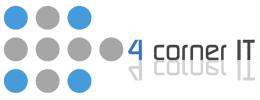When crafting a contingency plan for network failure, you should consider several key components. Start with clear documentation outlining response procedures for hardware malfunctions, software bugs, and human errors. Prioritize risks by evaluating their likelihood and impact. Include regular training sessions to prepare your team for these scenarios.
You might reference real-world incidents, like the Dyn DDoS attack in 2016 or software glitches that caused banking outages, to emphasize the importance of preparation. By planning effectively, you’ll not only protect your business but also reinforce trust with clients. There’s more valuable insight waiting for you to explore.
Importance of a Contingency Plan
Having a solid contingency plan is essential for any business, especially when it comes to network failures. You never know when a network outage might hit, and without a plan, your operations could come to a grinding halt. This downtime can lead to lost revenue, frustrated customers, and damage to your reputation.
By prioritizing a contingency plan, you’re not just safeguarding your technology; you’re protecting your entire business. When a network failure occurs, having a well-thought-out strategy allows you to respond quickly and effectively. You’ll minimize disruption and keep essential services running, even during crises.
Moreover, a contingency plan demonstrates your commitment to reliability. It reassures clients and stakeholders that you’re prepared for unexpected events, enhancing their confidence in your business. This proactive approach can set you apart from competitors who may not prioritize such planning.
In today’s digital landscape, the risks are real, and being unprepared can have severe consequences. So, take the time to develop a strong contingency plan. You’ll not only mitigate risks but also guarantee your business can thrive, even in the face of adversity.
Key Components of a Plan
A strong contingency plan hinges on several key components that guarantee your business can effectively respond to network failures.
First, you need a straightforward document that all employees can understand. Avoid jargon and keep the language simple; this guarantees everyone knows their role during a crisis.
Next, your plan should address three critical questions: What problems might occur? What steps will you take if those problems happen? And what preventive measures can you implement now to avoid issues later? This clarity helps your team remain focused and reduces confusion during stressful situations.
Additionally, it’s essential to prepare for a range of potential disasters, including natural events. By anticipating these risks, you can take proactive measures to minimize losses and guarantee business continuity.
Lastly, prioritize risks based on their likelihood and urgency. For instance, a cybersecurity breach is more probable than a physical theft, so tackle the most pressing concerns first.
Types of Network Failures
When it comes to network failures, understanding the various types can greatly improve your contingency planning. By identifying these failures, you can develop targeted strategies to mitigate their effects.
Here are three common types of network failures you should consider:
- Hardware Failures: These occur when physical devices, like routers or switches, malfunction or break down, disrupting network connectivity.
- Software Failures: Bugs or glitches in network management software can lead to outages, affecting your ability to monitor and control the network effectively.
- Human Errors: Mistakes made by personnel, such as misconfiguring settings or accidentally disconnecting cables, can inadvertently cause network disruptions.
Recognizing these types of failures allows you to tailor your contingency plan more effectively. By preparing for hardware and software issues, as well as human errors, you can minimize downtime and maintain business continuity.
Additionally, implementing regular training for staff can considerably reduce the risk of human error, while routine maintenance checks can catch hardware issues before they escalate.
Risk Assessment Strategies
Effective risk assessment strategies are essential for identifying vulnerabilities within your network infrastructure. Start by conducting a thorough inventory of your assets, including hardware, software, and data. This step helps you understand what needs protection and where weaknesses might lie.
Next, analyze potential threats, such as cyberattacks, hardware failures, or natural disasters. Once you’ve identified threats, evaluate the likelihood of each incident occurring and the potential impact on your operations. This prioritization is significant for focusing your resources effectively.
Engage your team in brainstorming sessions to gather diverse perspectives and insights, as they might recognize risks you haven’t considered. Following your analysis, develop a risk matrix to visualize and categorize risks based on their likelihood and severity.
This tool aids in decision-making and helps you allocate resources where they’re needed most. Regularly review and update your risk assessment strategies to adapt to new threats and changes in your infrastructure.
Real-World Examples and Scenarios
Real-world examples of network failures highlight the significance of having a well-prepared contingency plan.
Consider the 2016 Dyn DDoS attack that disrupted major websites like Netflix and Twitter. Without a plan, businesses faced significant downtime and lost revenue.
Similarly, in 2020, a major bank experienced a system outage due to a software update, leaving customers unable to access their accounts. These incidents demonstrate that even well-established companies can be vulnerable.
To avoid such scenarios, you should focus on these key elements in your contingency plan:
- Identify critical assets: Know what systems and data are essential for your operations.
- Establish clear protocols: Define specific actions to take when a network failure occurs.
- Regularly test your plan: Conduct drills to guarantee your team knows their roles and can respond swiftly.
The Importance of a Robust Network Contingency Plan
Having a solid contingency plan for network failures isn’t just smart—it’s essential. By understanding the importance of preparation, identifying potential issues, and outlining immediate responses, you can safeguard your business against unexpected disruptions.
Remember, prioritizing risks based on their likelihood guarantees you tackle the most critical challenges first. With a strong plan in place, you’ll enhance your business’s resilience and enjoy peace of mind, knowing you’re ready for any network hiccup that comes your way.

